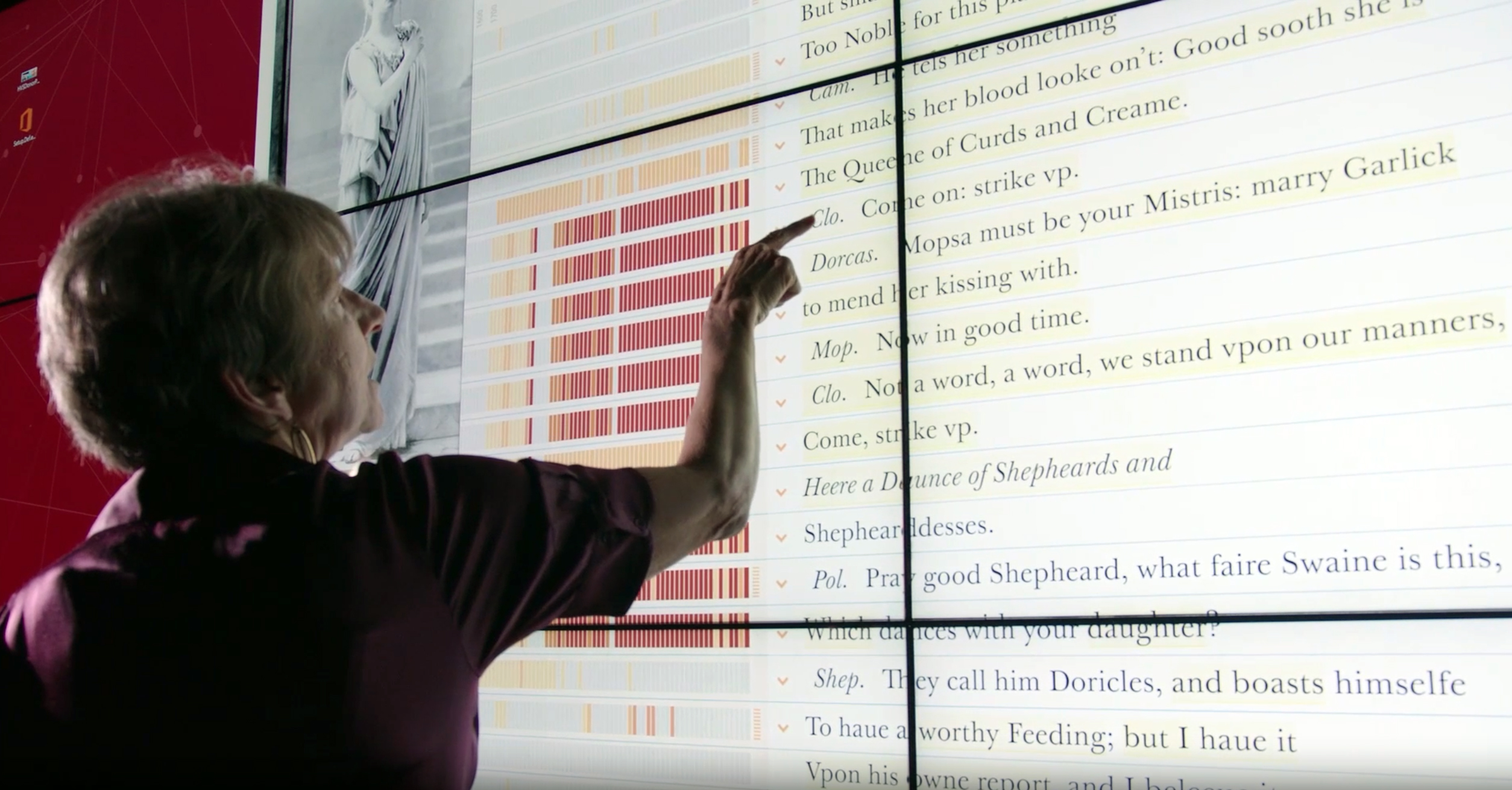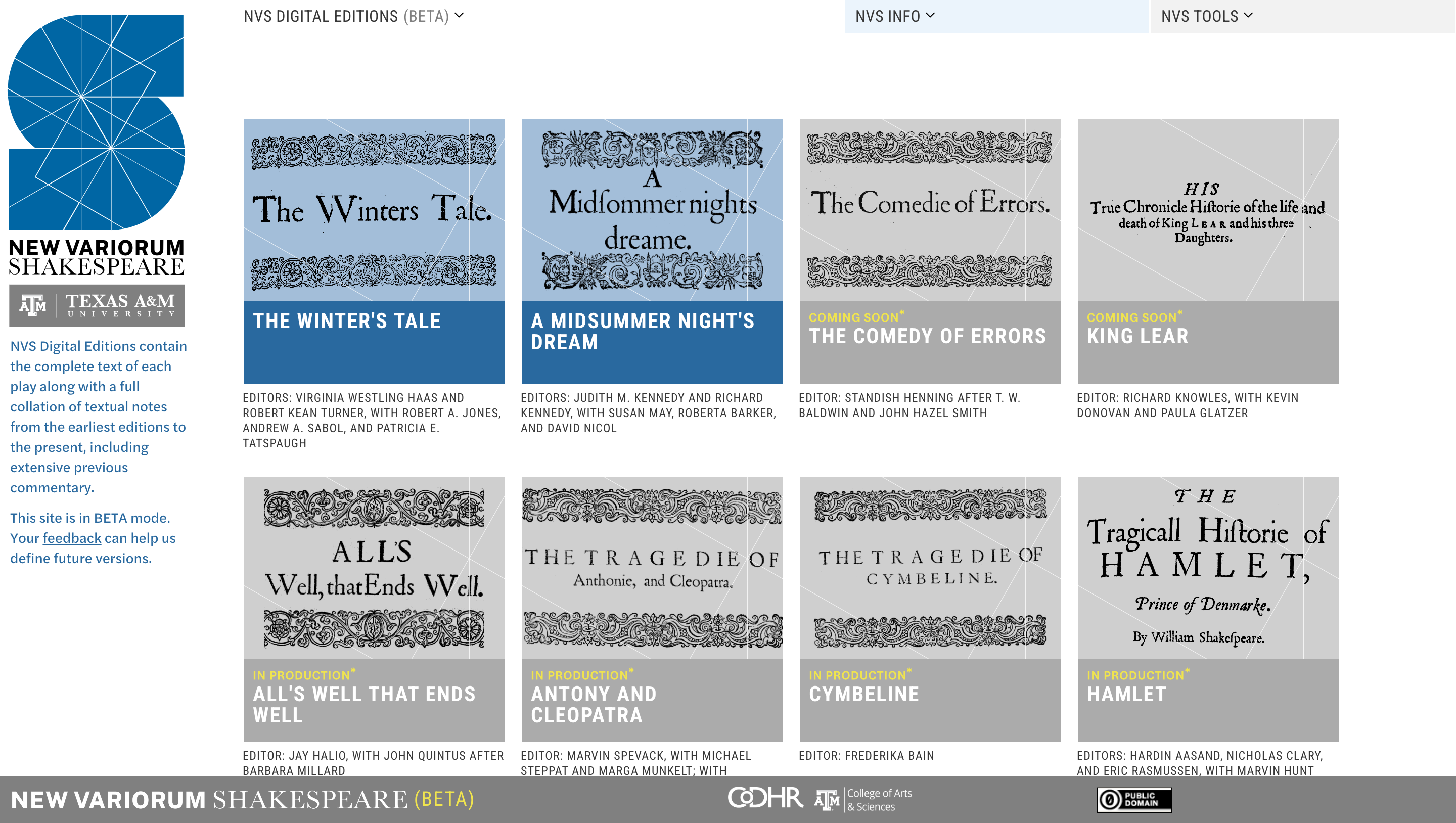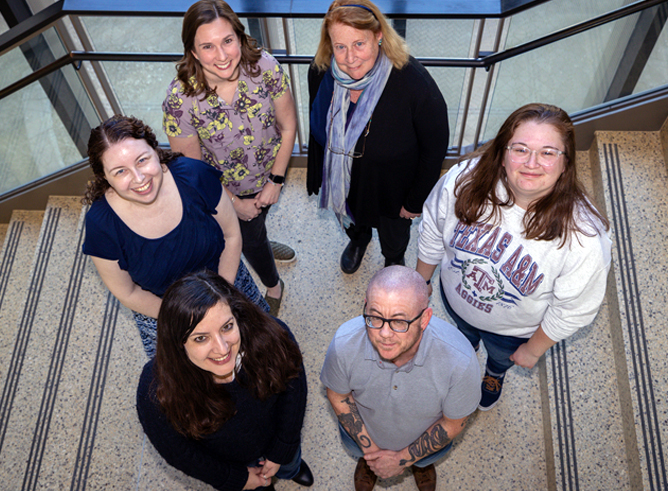
In the summer of 1871, the American lawyer Horace Howard Furness began an ambitious project. He wanted to document every change that centuries of editors had made to the texts of Shakespeare’s plays and poems, and everything that editors and commentators had written about them — all in one place. This herculean task became known as the New Variorum Edition of Shakespeare, with the term ‘variorum’ referencing the Latin phrase editio cum notis variorum, or "an edition with the notes of the various [editors and commentators]."
“A variorum edition of any work is considered to be the gold standard academic edition,” Texas A&M University Distinguished Professor of English Dr. Margaret Ezell said. “To do that of Shakespeare, one of the central core figures in the English literary canon, ... is incredibly influential."
By the time of his death in 1912, Furness had presented almost half of Shakespeare’s plays in this ‘variorum’ format, allowing readers to have the entire history of a play’s text and its critical reception at their fingertips.
Now, more than 150 years after Furness began, Texas A&M is home to the New Variorum Shakespeare (NVS), available in a format that Furness could only have dreamed. What began as a print compendium has evolved into a major digital project located in the Texas A&M Department of English.
In 2019, Texas A&M English Professor Dr. Laura Mandell, then the director of the Center of Digital Humanities Research (CoDHR), negotiated with the Modern Language Association of America to digitally publish the New Variorum Shakespeare as a free and publicly accessible website, whereas a single print variorum of a single play could cost up to $300. Reporting on what she justly calls "revolutionary work," Mandell and her team, including the University of Technology Sydney’s Anne Burdick and Texas A&M’s very own Dr. Bryan Tarpley and Dr. Katayoun Torabi, "created a richly intuitive interface for learning about and using variorum editions."

Earlier this year, the NVS transitioned into the Department of English with Torabi as its project manager, joined by Instructional Assistant Professor Dr. Dorothy Todd and Dr. Kris May as associate digital editors. To mark the occasion of the NVS’s arrival in the Department of English, Texas A&M hosted a major conference titled “Folio Futures: Editing Early Modern Plays for Tomorrow’s Audiences” that brought together Shakespeareans and digital humanists from around the world. The team at Texas A&M worked with two general editors, the distinguished Shakespearean Professor Dr. Eric Rasmussen (University of Nevada Reno) and Professor Dr. Paul Werstine (University of Western Ontario), a host of individual volume editors and the NVS Board, which is chaired by former Executive Director of the Shakespeare Association of America Professor Dr. Lena Orlin (Georgetown University) and composed of world-renowned experts in Shakespeare and the digital humanities.
"This project foregrounds the cutting-edge, interdisciplinary research, scholarship and teaching that is happening here at Texas A&M," Todd observes. "We’re really on the forefront of digital humanities and literary studies."
As we enter the 2024-2025 academic year, the New Variorum Shakespeare takes another step forward with a fresh crop of academic and leadership appointments. Assistant Professor of English Dr. Robert Stagg, formerly of the Shakespeare Institute and the University of Oxford, has joined Texas A&M as the director of the New Variorum Shakespeare with ambitious plans, many of which will become reality from early 2025.
"My job is to ensure the New Variorum Shakespeare becomes known around the world as one of the most exciting and essential projects in Shakespearean and early modern studies," Stagg said. "With schemes ranging from a major annual lecture, to a regular seminar series, to far-reaching partnerships with the biggest Shakespearean organizations in the USA and overseas, I want to ensure that the New Variorum Shakespeare is properly recognized as one of the jewels of Shakespeare studies and of the digital humanities."
Alongside Stagg, Texas A&M has made three further assistant professor appointments in the field of Shakespearean and early modern literature. The early modernist Dr. Whitney Sperrazza joins Texas A&M from the Rochester Institute of Technology, as does the early Americanist Dr. Raymond Leonard from Rutgers University. Early modernist Dr. Katie Adkison will join from Bates College in the 2025-2026 academic year. All are hot on the heels of early modernists Dr. Kevin O’Sullivan’s and Dr. Curry Kennedy’s appointments to the English Department last academic year.
"To see six appointments in early modern studies in the space of a couple of years is testament to Texas A&M’s pride in the New Variorum Shakespeare and its recognition of the importance of the premodern humanities," Stagg observes.
A student or even a performer thinking about staging a character in a play can go into the NVS and see how it’s been done in the past to inform their characterization. When you’re looking at a single variorum for a play, you’re essentially looking through time to its very beginnings, now all visible through one click of a button.
Sperrazza describes how "the energy around early modern studies at Texas A&M is crackling right now, with four of us joining the already strong early modern faculty ranks. I am thrilled to be contributing to an early modern community that is so imaginative and forward-thinking, even as it remains committed to the very best historically- and materially-minded scholarship."
Work proceeds apace on the digital development of the NVS. Two variorum texts of Shakespeare’s plays, A Midsummer Night’s Dream and The Winter’s Tale, are already published on the NVS website and the publication of two more, King Lear and The Comedy of Errors, is on the near horizon. Alongside this, the NVS team has developed new optical character recognition software that effectively teaches itself how to transcribe early modern printed books — a development that Mandell says will reduce the amount of time it takes to edit variorum editions by decades, ensuring that more Shakespeare plays will be available in variorum format in record time.
“There’s a lot of labor that goes into a project of this magnitude...” May added. “It’s ongoing and ongoing ... entering a conversation with generations of scholars.”
The team also plans to build teaching tabs into the NVS, adding teaching exercises to help guide students through the commentary and collation notes with step-by-step instructions, questions and an appendix where they can see sources for the historical staging of the play they are studying.
"A student or even a performer thinking about staging a character in a play can go into the NVS and see how it’s been done in the past to inform their characterization," Torabi said. "When you’re looking at a single variorum for a play, you’re essentially looking through time to its very beginnings, now all visible through one click of a button."
Stagg is "keen to make the variorum helpful for theatre practitioners as well as scholars and students, and Texas A&M’s almost unrivaled resources can realize that particularly exciting aspect of the NVS."
The end result, Mandell concludes, "will make the editions a joy to use by directors, performers and scholars working with Shakespeare’s plays."

Graduate and undergraduate students play a key part in the NVS, with some spending a year of their graduate study stationed in the NVS’s headquarters working to make this centuries-old scholarly dream a digital reality.
"It’s cool to inherit something that has a massive legacy in Shakespeare studies, especially as someone who is coming up in the field," said Texas A&M English Ph.D. student Alexandra LaGrand '26. "I’m really excited for the accessibility and user interface of the project. I’m already planning on using all these sources and amazing materials in my future classrooms."
The NVS proved inspirational for LaGrand’s own, award-winning digital project Points Like A Man, which catalogues records of cross-gender casting in Shakespearean productions between 1660 and 1900.
Texas A&M English Ph.D. student Lindsey Jones ’24 also has worked on the New Variorum Shakespeare.
"The NVS is an inheritance," she observes, "but in some ways, it’s changing that inheritance into something more forward facing and future-oriented. The work we’re doing brings this history more into where the future of scholarship is going, where it’s more public facing and accessible, rather than in 30-pound books in a library that people can’t access unless they have very specific credentials."
Jones is currently producing a digital scholarly edition of a non-Shakespearean play from the early modern period, A Merrie Dialogue, Betweene Band, Cuffe, and Ruffe, and has worked on numerous digital humanities projects within the Department of English, including the World Shakespeare Bibliography that has been based at Texas A&M for decades and the Maria Edgeworth Letters Project.
It’s cool to inherit something that has a massive legacy in Shakespeare studies, especially as someone who is coming up in the field. I’m really excited for the accessibility and user interface of the project. I’m already planning on using all these sources and amazing materials in my future classrooms.
"The Department of English at Texas A&M is one of the best places in the world to learn about the digital humanities, with the university’s Center of Digital Humanities Research, which has been run by three successive members of the department, and our very own Digital Humanities Certificate, not to mention in detail the vast range of digital humanities endeavor being carried out across the Department in all periods and genres of literary study," Stagg said.
The New Variorum Shakespeare is emblematic of Texas A&M’s commitment to the digital humanities and to early modern studies alike.
"Texas A&M has a long-standing and international reputation for being on the vanguard of Shakespeare studies as well as research of the early modern period more generally," O'Sullivan said.
The NVS will do yet more to establish and burnish that reputation, creating the future of Shakespeare studies and the way we think about editing or studying the past in the process, according to Ezell.
"The print variorum ... was for a previous generation and for a select scholarly community," she added. "The New Variorum Shakespeare is for everybody."
